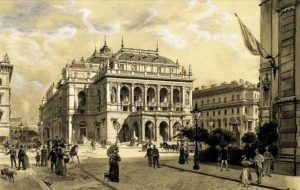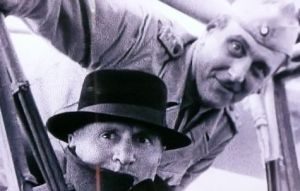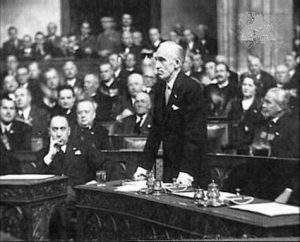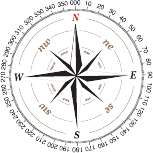Lakatos, Géza de Csíkszentsimon. born 30-04-1890, in Budapest,  Austria-Hungary, He completed the lower four grades of the gymnasium with the Piarists in Pest, and then – after the early death of his father – entered the main realist school of the Sopron army together with his brother named Kálmán. He graduated from the Ludovika Academy in 1910 and was commissioned as a lieutenant that year. He first served in the 1st Hungarian Infantry Regiment in Budapest and then in the Linz Infantry Regiment. In 1914 he was admitted to the Vienna Military Academy of the General Staff (Kriegsschule), which was closed after the outbreak of the First World War.
Austria-Hungary, He completed the lower four grades of the gymnasium with the Piarists in Pest, and then – after the early death of his father – entered the main realist school of the Sopron army together with his brother named Kálmán. He graduated from the Ludovika Academy in 1910 and was commissioned as a lieutenant that year. He first served in the 1st Hungarian Infantry Regiment in Budapest and then in the Linz Infantry Regiment. In 1914 he was admitted to the Vienna Military Academy of the General Staff (Kriegsschule), which was closed after the outbreak of the First World War. 
 He was a military attaché in Prague from 1928 to 1934. On 05-08-1943 he succeeded vitéz Gusztáv Jány
He was a military attaché in Prague from 1928 to 1934. On 05-08-1943 he succeeded vitéz Gusztáv Jány 
 as commander of the Second Army. On 01-04-1944 he was appointed commander of the 1st Hungarian Army, but this was only until 15-05-1944. Lakatos second from the left
as commander of the Second Army. On 01-04-1944 he was appointed commander of the 1st Hungarian Army, but this was only until 15-05-1944. Lakatos second from the left 
In August 1944 supporters of Lakatos and the Regent of Hungary in World War II, Miklós, Horthy de Nagybánya, 
 armed with one tank, overthrew the German-installed government of Döme Sztójay,
armed with one tank, overthrew the German-installed government of Döme Sztójay,  the Hungarian soldier and diplomat of Serb origin, who served as Prime Minister of Hungary in 1944. .Döme Sztójay, was found guilty of war crimes and crimes against the Hungarian people, sentenced to death, and executed by a firing squad in Budapest in 22-08-1946, age 63. Lakatos’s military government stopped the deportation of Hungarian Jews, with acting Interior Minister Béla Horváth ordering Hungarian gendarmes to use deadly force against any deportation effort. Lakatos also reopened peace talks with the Allies that had previously been begun by Dr. Miklós Kállay,
the Hungarian soldier and diplomat of Serb origin, who served as Prime Minister of Hungary in 1944. .Döme Sztójay, was found guilty of war crimes and crimes against the Hungarian people, sentenced to death, and executed by a firing squad in Budapest in 22-08-1946, age 63. Lakatos’s military government stopped the deportation of Hungarian Jews, with acting Interior Minister Béla Horváth ordering Hungarian gendarmes to use deadly force against any deportation effort. Lakatos also reopened peace talks with the Allies that had previously been begun by Dr. Miklós Kállay,  the Prime Minister of Hungary during WW2. In 1946 Kállay, went into exile, finally settling in the United States in 1951 and died 14-01-1967, age 79, in New York City, New York. Lakatos even went as far as to begin talks with the Soviets. On 15-10-1944, Horthy tried to force the Germans out entirely and concluded an armistice with the Allies. However, when Horthy announced this in a nationwide radio address, the Germans kidnapped Horthy’s son, Miklós Horthy, Jr.,
the Prime Minister of Hungary during WW2. In 1946 Kállay, went into exile, finally settling in the United States in 1951 and died 14-01-1967, age 79, in New York City, New York. Lakatos even went as far as to begin talks with the Soviets. On 15-10-1944, Horthy tried to force the Germans out entirely and concluded an armistice with the Allies. However, when Horthy announced this in a nationwide radio address, the Germans kidnapped Horthy’s son, Miklós Horthy, Jr.,  and Horthy surrendered to them. SS-Obersturmbannführer Otto Skorzeny
and Horthy surrendered to them. SS-Obersturmbannführer Otto Skorzeny  had became the Nazis’ go-to man for special operations. He already liberated Benito Mussolini
had became the Nazis’ go-to man for special operations. He already liberated Benito Mussolini


 from his prison in the mountains. Another occurred in 1944 when Skorzeny and his men captured the son of the Hungarian regent, Admiral Horthy. Securing Miklós Horthy Jr after a brief fire fight, Skorzeny’s team then rolled him up in a carpet and put him on a plane to Berlin. Miklós Horthy was liberated by the Fifth U.S.
from his prison in the mountains. Another occurred in 1944 when Skorzeny and his men captured the son of the Hungarian regent, Admiral Horthy. Securing Miklós Horthy Jr after a brief fire fight, Skorzeny’s team then rolled him up in a carpet and put him on a plane to Berlin. Miklós Horthy was liberated by the Fifth U.S.  Army, under command of Lieutenant General Mark Wayne “Contraband”. Clark
Army, under command of Lieutenant General Mark Wayne “Contraband”. Clark  on 05-05-1945
on 05-05-1945
The far-right Arrow Cross Party,  backed by the Germans, immediately staged a coup and took full control of the government. Lakatos was forced to resign that day, and was imprisoned by the Germans in Sopronkőhida. After that he was interned into Sopron. During the Arrow Cross Party’s short rule, ten to fifteen thousand civilians (many of whom were Jews and Romani) were murdered outright, and 80,000 people were deported from Hungary to various concentration camps in Austria
backed by the Germans, immediately staged a coup and took full control of the government. Lakatos was forced to resign that day, and was imprisoned by the Germans in Sopronkőhida. After that he was interned into Sopron. During the Arrow Cross Party’s short rule, ten to fifteen thousand civilians (many of whom were Jews and Romani) were murdered outright, and 80,000 people were deported from Hungary to various concentration camps in Austria

Following the Soviet occupation of Hungary, Lakatos was interrogated several times in Kiskőrös. He was released from prison in January 1946 and thereafter appeared as a witness in war crime trials against the Arrow Cross Party and other pro-Nazi former officials before the so-called People’s Tribunal of Budapest.  In the forthcoming years he lived in his estate in Érd. His military pension was revoked by the Communist authorities and his lands were also confiscated in 1949. Following that he moved to Budapest where he worked as a book illustrator and silk painter, and lived in poor financial circumstances.
In the forthcoming years he lived in his estate in Érd. His military pension was revoked by the Communist authorities and his lands were also confiscated in 1949. Following that he moved to Budapest where he worked as a book illustrator and silk painter, and lived in poor financial circumstances.
Death and burial ground of Lakatos, Géza de Csíkszentsimon.



His daughter emigrated to Australia in 1956, when the failed Hungarian Revolution briefly allowed people to emigrate from Hungary. Following his wife’s death in 1965, the authorities permitted Lakatos to travel to Adelaide where his daughter lived since 1957. He died there two years later, in 21-05-1967 (aged 77,) in Adelaide, South Australia, He is buried with his wife Louise Szomjas Lakatos, who died in 03-01-1960,  at Athelstone Independent Cemetery Athelstone, Campbelltown City, South Australia, Australia, in Row C3.
at Athelstone Independent Cemetery Athelstone, Campbelltown City, South Australia, Australia, in Row C3.


























Leave a Reply